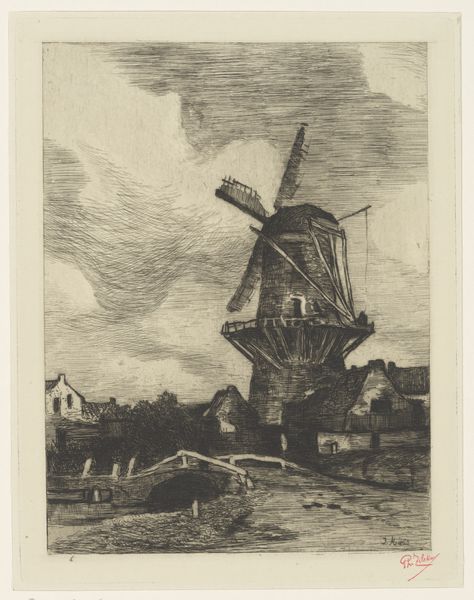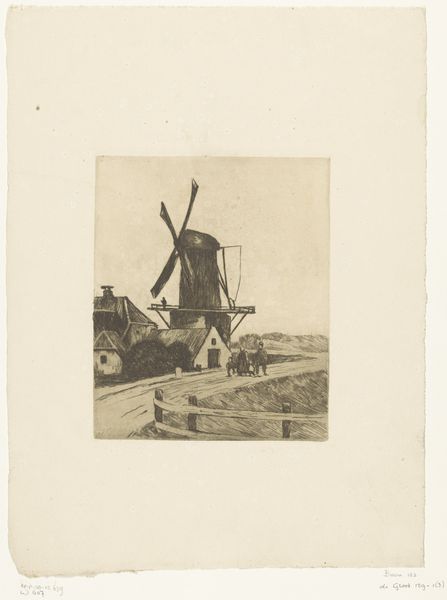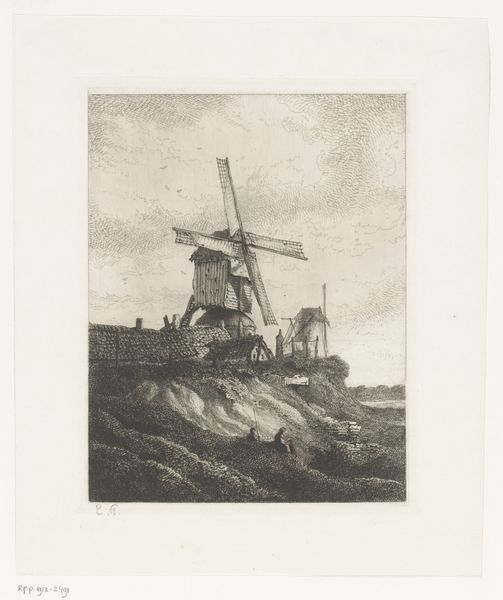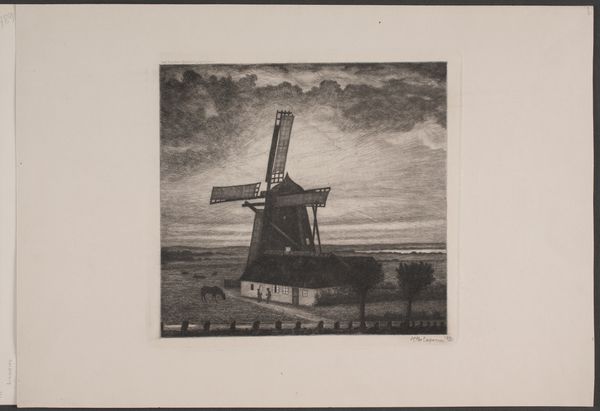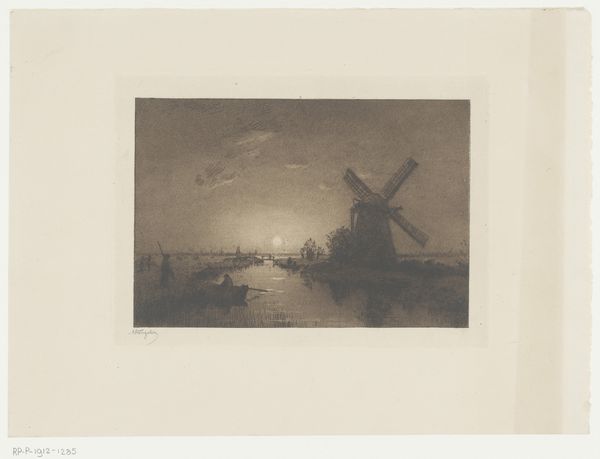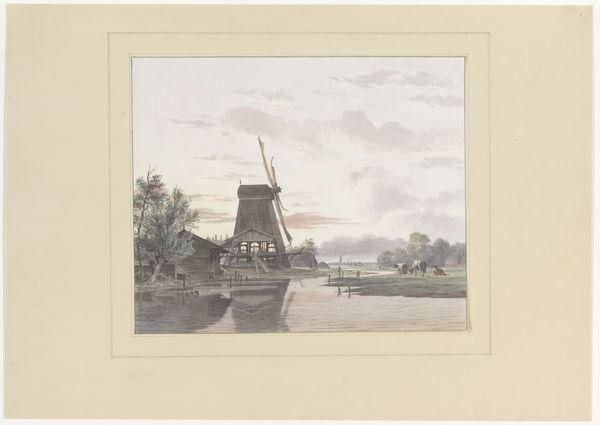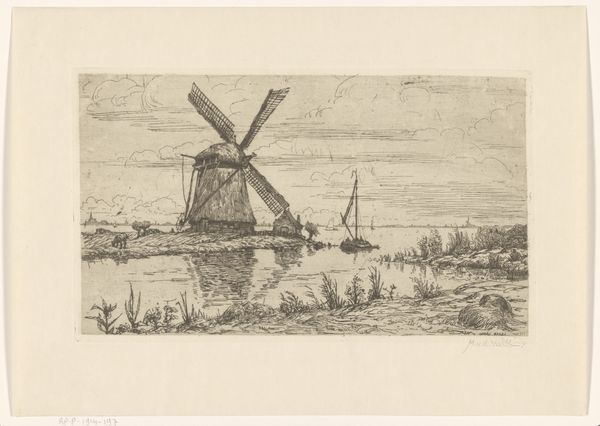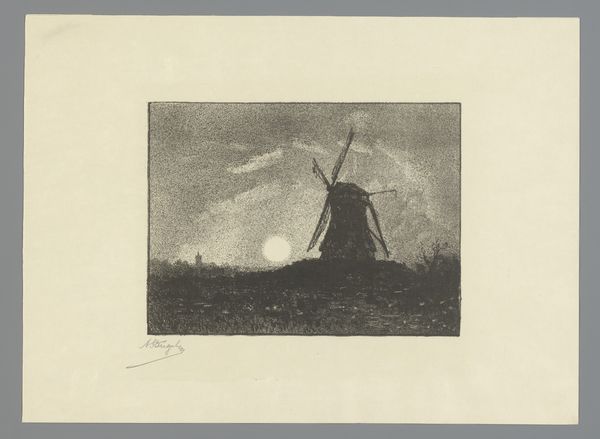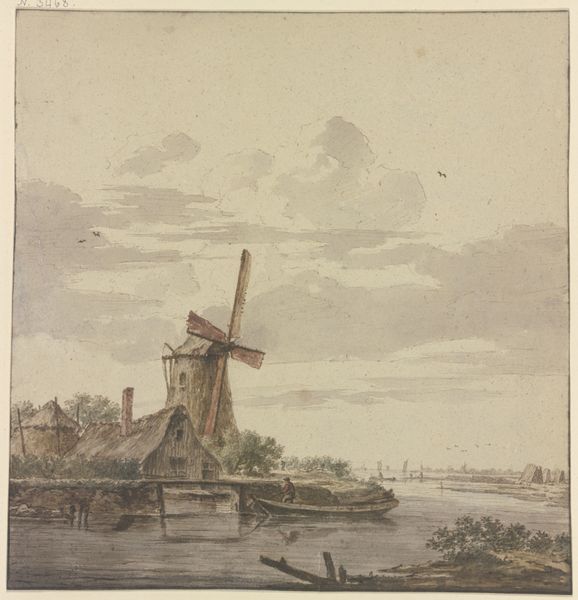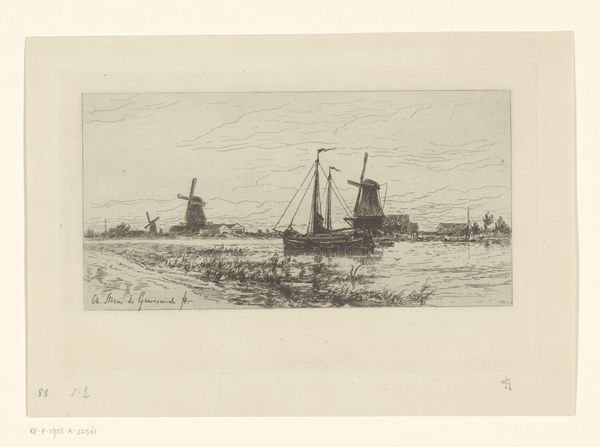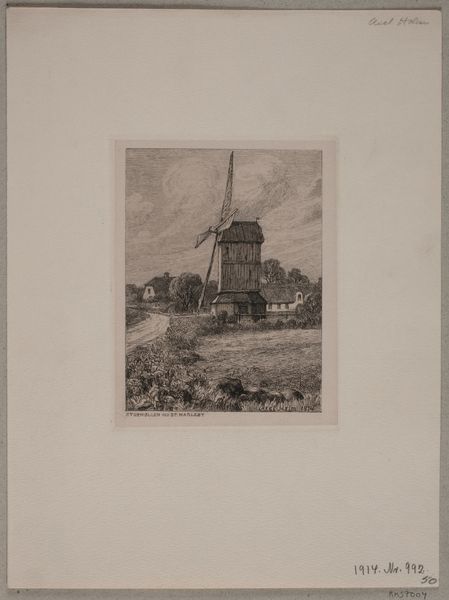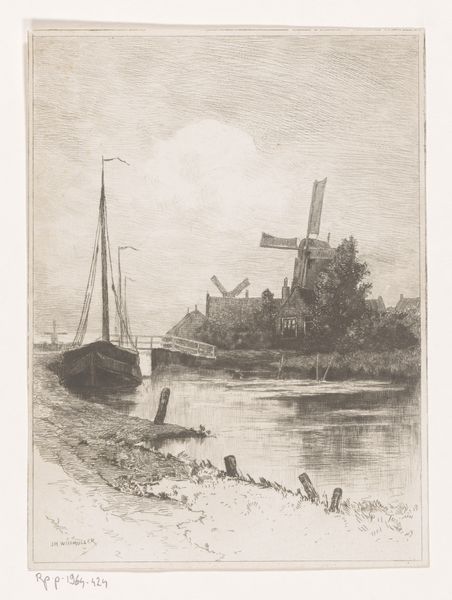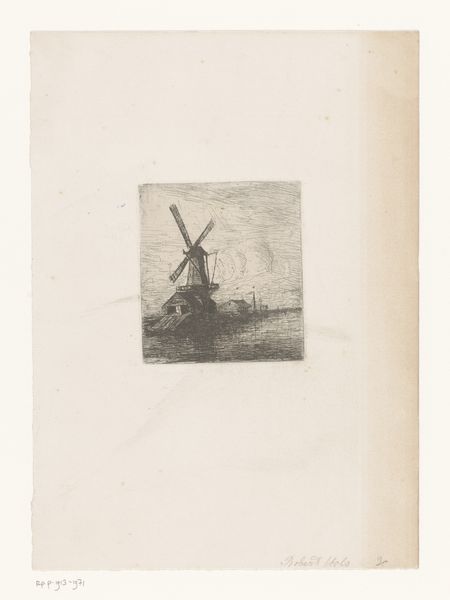
Dimensions: height 275 mm, width 177 mm
Copyright: Rijks Museum: Open Domain
Editor: So, this is Alfred J. Skrimshire's "Molen in een landschap," an etching from 1904. The tonal range is so subtle; it feels like peering into a memory. What feelings or cultural connections does this scene evoke for you? Curator: The windmill instantly signifies the ingenuity of humanity harnessed to nature’s power. It is no coincidence it sits comfortably amongst other idyllic scenery. Water, for instance, is featured prominently: the ducks on the stream in the foreground evoke a feeling of pastoral serenity; these ducks float undisturbed, echoing traditions of images and the slow current of time. It is as though this idyllic scenery acts as an allegory. What human element does this provoke for you, if any? Editor: I notice the figures of the girls gathering reeds on the edge of the pond. Are you suggesting there is perhaps some deeper symbolic resonance there? Curator: Precisely! Think of the collected reeds. The reaping or gathering is an active motif representing the harvesting of the soul for religious rites. The gathering of what the earth and waters can give us also highlights the importance of feminine figures; notice how they contrast and coincide. They act almost as water spirits of mythology, but on common land. Are there any other elements that suggest anything like this to you? Editor: The positioning of the windmill, towering over the pond, reminds me of similar spiritual positioning across religions and folklore. Perhaps even today. Thanks. That gives me much to consider. Curator: It speaks to our collective past and persistent connection to archetypal themes.
Comments
No comments
Be the first to comment and join the conversation on the ultimate creative platform.
